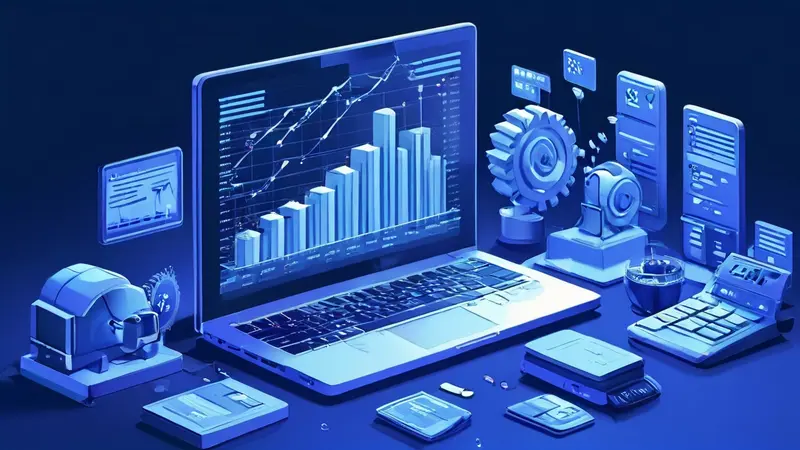The editor of Downcodes will give you an in-depth understanding of all aspects of the server! This article will comprehensively analyze server knowledge from multiple perspectives such as the basic concepts of servers, hardware components, classified applications, operating system selection, network environment configuration, and security maintenance to help you better understand server technology. Whether you are a computer professional or a beginner interested in server technology, I believe you will benefit a lot from this article. Let’s unveil the mystery of the server together!

Server mainly refers to an efficient and stable computer system that can provide various services to users and other computers through the network, such as data processing, storage and application access. The design of the server emphasizes multi-tasking, high reliability and security, long-term uninterrupted operation, and powerful data processing capabilities. For example, in website hosting, the server stores all the data of the website and serves the required content to the users who visit the website.
A server refers to a computer that is specialized in providing various services to users and exchanging data through the network. Servers can be divided into various categories based on service types and services carried, including file servers, database servers, mail servers, etc. Their common features are high-performance hardware systems and efficient and stable operating systems. Servers play a vital role in business networks, handling requests from clients and providing necessary data and services.
The hardware composition of the server is relatively complex, usually including key components such as CPU, memory, hard disk, motherboard and network interface card. These components are more powerful than typical PCs to ensure they can handle high concurrent requests and complex data calculations. The high-performance CPU can speed up data processing, the large-capacity memory supports more programs running at the same time, and the stable hard disk storage system ensures data security and quick access.
Servers can be divided into different categories based on the types of services provided and application scenarios. For example, a web server handles web browsing requests, an application server runs specific applications, and an FTP server provides file transfer services. Each server has a unique role in its specific application field, providing strong business support for various enterprises and users.
Server operating systems are designed differently from PC operating systems. They focus more on stability, security, and resource management. Currently, popular server operating systems on the market mainly include Windows Server, Linux distributions, and Unix. Each of these operating systems has its own advantages and can meet the needs of different business environments.
When choosing a server operating system, there are several important factors to consider:
Compatibility: Make sure your chosen operating system is compatible with your current hardware devices and the applications you intend to install. Stability: For servers, the stable operation of the system is crucial, so stability is an indicator that cannot be ignored. Security: The server's operating system should have strong security mechanisms to prevent data leakage or unauthorized access. Performance: Based on the expected workload of the server, the operating system should perform well and utilize hardware resources efficiently.In addition to being determined by the hardware and operating system, the performance of the server is also affected by the network environment and configuration in which it is located. The server's network configuration includes IP address settings, subnet division, router and switch settings, etc. A properly configured network environment can ensure efficient data transmission and reduce network congestion.
The bandwidth, delay and reliability of the network directly affect the performance and quality of service of the server. For example, high bandwidth can support the transmission of large amounts of data, low latency ensures quick response to user requests, and network reliability is related to the stable operation of services. Therefore, when building a server, the planning and optimization of the network environment cannot be ignored.
The importance of server security cannot be overstated. Any security breach may result in the disclosure of sensitive data or service interruption. Server security measures include but are not limited to physical security, data encryption, firewall settings, timely installation of security updates, etc. At the same time, daily maintenance of the server is also key to ensuring its stable operation, including monitoring server status, backing up important data, cleaning up useless files, etc.
1. What is a server?
A server is a computer device designed to store, process, and deliver data. It can provide various services such as website hosting, email services, database management, etc. Servers usually have high processing power, storage capacity, and network connection speeds to meet the needs of a large number of users accessing and processing data at the same time.
2. What does the server do?
Servers play a vital role in the Internet and corporate intranets. They are used to host websites and applications so that users can access and use them over the Internet. Servers are also used to store and manage data to ensure data security and reliability. In addition, the server can also provide various network services such as email, file sharing, video streaming, etc.
3. What is the difference between a server and a personal computer?
There are significant differences in performance, purpose, and reliability between servers and personal computers. First, servers typically have higher processing power and storage capacity than personal computers and can handle large numbers of requests and store large amounts of data at the same time. Secondly, servers often run 24/7 with greater reliability and stability to ensure continued service and data security. In addition, servers are often designed as rack-mounted or tower-mounted rather than desktop-sized to fit into a data center or computer room environment.
I hope this article helps you gain insight into the server. The editor of Downcodes will continue to bring you more exciting technical content!